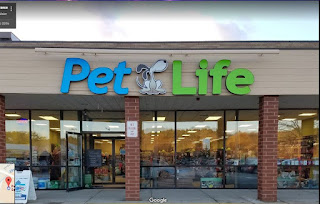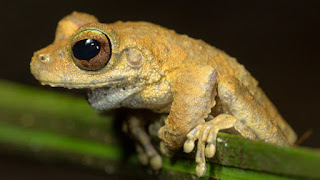Be a friend or be afraid? - Daniel Island News
Slithery serpents are no stranger to the coastal wetlands that make up the Lowcountry.
There are 38 species of snakes overall throughout the state of South Carolina. Of those, thankfully only six are venomous. The "scary six" are the copperhead, cottonmouth, pigmy rattlesnake, Eastern diamondback rattlesnake, timber rattlesnake and the coral snake.
Unfortunately, especially for those with the fear of the silent crawlers also known as ophidiophobia, two venomous snakes can be fairly common on Daniel Island — the copperhead and cottonmouth. Most of the others that might be seen scurrying about are harmless – the black racer, brown snake, corn snake, Eastern garter snake and the rat snake.
Snakes to beware
The copperhead is South Carolina's most venomous snake. Wherever construction is taking place on the island, there is a good chance that a copperhead is nearby. Unlike most wildlife, copperheads are attracted to loud sounds and every day commotions that people make.
Copperheads primarily forage after dark, especially during the hotter parts of the year. They mate in the spring and females give birth in the late summer and likely only reproduce every other year.
Due to their copper camouflage, copperheads are responsible for the majority of the snakebites in the southeast each year. Fortunately, copperhead venom is not very potent and human deaths are exceedingly rare.
It's easy to mistake a copperhead for a corn snake and vice-versa. The best way to tell them apart is that corn snakes are more colorful and lack fangs.
If stepped on or otherwise seriously provoked or frightened, copperheads will defend themselves.
Cottonmouths are the state's most common venomous snake. The semi-aquatic snake receives its name from the whiteness of the interior of its mouth that it exposes as a defensive display. They are often referred to as "water moccasins."
This species is commonly confused with non-venomous watersnakes that typically flee if on land or in a tree and go underwater. Cottonmouths typically stand their ground and gape to threaten a predator.
Despite their aggressive reputation, research has indicated that cottonmouths will seldom bite unless stepped on or picked up. Cottonmouths can be readily recognized when swimming because most of their body is above the water's surface.
Cottonmouths also tend to forage at night. They mate in the early summer and produce litters of up to 20 every two to three years.
But one wouldn't know whether or not these scaley specimens are friends or foes unless they could identify the venomous from the non-venomous. Thankfully, that's what S.C. Department of Natural Resource's (SCDNR) herpetologist Andrew Grosse does for a living.
Grosse has served as the state's herpetologist for nearly the past three years, but has been with SCDNR since 2012. He has worked with reptiles and amphibians in one capacity or another for most of his life.
"I'm trying to help people understand snakes," Grosse said. "…I have a soft spot in my heart for snakes."
Venomous vs. non-venomous
When it comes to deciphering which snakes carry a poisonous bite and which ones do not, the first tell tale sign is their eyes. Snakes with round pupils are characterized to be non-venomous, while those with cat-eye pupils are more than likely venomous.
A snake's head shape is also a good indicator. Oval-shaped heads are a sign of non-venomous, while triangular-shaped heads are associated with being venomous. The triangle shape is formed by the venom glands.
However, nature is clever and snakes are some of the wittiest in the wilderness. Non-venomous snakes will sometimes mimic venomous ones as a predatory defense mechanism. Such techniques include flattening out their head to look more triangular, hissing, puffing up their body, striking and rattling their tail.
Grosse noted there have been an abundance of incidents where corn snakes are killed because they are mistaken for copperheads due to the saddle on their back. Their colors and patterns are similar but their mannerisms are vastly different.
"More times than not it's more of a show," Grosse said. "…From their perspective we're a huge predator and they're trying to scare us away so we don't hurt them."
Deter unwanted visitors
In most cases, if there is a snake in your yard, chances are it's just passing through. Naturally, they don't want to be around people or commotion unless their basic needs of food, water and shelter are being met.
The most important thing homeowners can do to deter these unwanted visitors is to make sure their yard is trimmed so that there's no place for them to hide. If there are shrubs or vegetation near the side of your home it creates a pathway for rodents to burrow which attracts snakes.
Contrary to popular belief, Grosse noted that there is no evidence to suggest that pine straw is an attractive habitat for snakes. They prefer rotted wood, stumps or logs to lay their eggs. Pine straw doesn't offer that same protection.
Residential areas that do offer snakes a safe haven are crawl spaces. Check places like the attic periodically for squirrels or mice. The reason you want to keep these little guys out is because they're a food source for the bigger ones that slither in.
For avid gardeners, if you are pruning plants be sure to look before you reach because snakes like to hide. The common saying that they are more afraid of us than we are of them holds true.
"Their whole existence revolves around surviving, reproducing and keeping that population going," Grosse said. "... If you keep a safe distance and leave them alone, they'll be on their way."
Most snakebites occur when someone tries to kill or harass a snake. The following information from the Centers for Disease Control and Prevention about what to look for and what to do if you've been attacked.
WHAT TO DO IF BITTEN:
• Keep the bitten person still and calm. This can slow down the spread of venom if the snake is venomous.
• Seek medical attention as soon as possible.
• Dial 911 or call EMS.
• Apply first aid if you cannot get the person to the hospital right away.
• Lay or sit the person down with the bite below the level of the heart.
• Wash the wound with warm soapy water.
• Cover the bite with a clean, dry dressing.



Comments
Post a Comment